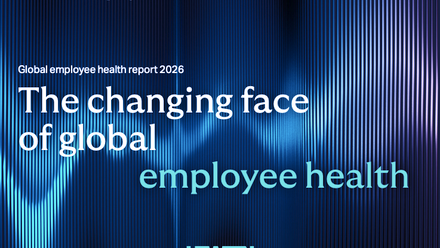Transform employee benefits through technology: A strategic approach
The employee benefits landscape is undergoing a significant transformation, with nearly half of HR budgets now allocated to technology investments.
This shift is driven by the recognition that effective employee benefits platforms can centralise and automate benefits administration while enhancing the overall employee experience.
With four-fifths of employees stating that access to benefits makes them less likely to seek employment elsewhere, these platforms are crucial for attracting and retaining talent.
Importance of investment in technology
As organisations prioritise investments in employee benefits technology, two-thirds of employer's plan to implement these solutions by the end of 2026.
Key objectives include reducing administrative burdens, freeing up HR resources for strategic initiatives, controlling costs, and increasing engagement with benefits.
A particular focus is on promoting preventative wellbeing benefits to mitigate rising medical claims.
Optimising benefits spend
With more than 30% of payroll allocated to employee benefits, organisations are under pressure to ensure that this expenditure delivers a return on investment.
Understanding which benefits are utilised and which are underused is essential.
Employee benefits platforms can provide valuable analytics that reveal utilisation patterns across different workforce demographics.
This insight allows employers to identify whether underutilisation stems from a lack of awareness or if the offerings are not perceived as valuable.
Enhancing engagement with benefits
Effective communication is vital for maximising employee engagement with benefits.
Unfortunately, information about benefits can often become lost in emails or intranet pages, leading to only 65% of employees knowing where to find relevant information.[5]
By providing a centralised digital platform for accessing benefits, employers can significantly boost engagement.
Automated communication campaigns tailored to individual needs and critical decision points can further enhance understanding and utilisation of benefits.
Research shows that 80% of employees with access to benefits technology feel their needs are met, compared to just 54% of those without.[6]
This correlation highlights the importance of benefits engagement in fostering overall employee satisfaction and performance.
Improving wellbeing outcomes
Rising medical costs and challenges in accessing healthcare have shifted employee behaviour, with many now utilising health benefits like online GPs as a first resort.
While this trend is positive, employers should leverage benefits technology to identify spikes in service usage and guide employees toward preventative wellbeing options.
For instance, instead of initiating costly claims for mental health counselling, employers can promote pre-paid counselling services available through employee assistance programs (EAPs) or cash plans.
By encouraging the use of preventative services, employers not only control costs but also demonstrate their commitment to employee wellbeing.
A significant 82% of employees with access to benefits technology feel their employer cares about their health, compared to just 56% of those without.[7]
Personalising the benefits experience
Benefits technology can enhance both the offering and the experience of employee benefits.
This requires a shift in perspective from viewing benefits as a mere selection of features to recognising the entire user experience as an opportunity for meaningful engagement.
By using relatable language and relevant content, employers can help employees navigate their options more effectively.
Integrating employee benefits platforms such as Darwin, with digital gateways, such as Benefits You App allows for push notifications that alert employees to relevant benefits and company updates.
As AI technology advances, further opportunities will emerge to connect employees with pertinent benefits and facilitate informed decision-making.
Establishing a centralised and automated data foundation is critical for success in this area.
Ensuring equitable benefits
As scrutiny increases around pay equity, employers must ensure that their benefits offerings do not contribute to pay disparities.
Upcoming EU pay disparity legislation will require organisations to calculate total compensation, including non-cash benefits, and provide employees with insights into how their packages compare.
Automating this reporting through employee benefits platforms can alleviate the administrative burden on HR while enabling benchmarking of benefits across different providers and countries.
This approach ensures that any potential pay gaps are identified and addressed.
Driving cultural change to attract talent
With the rise of remote work and diverse workforces, many employers are now focused on creating a consistent global approach to benefits.
Aligning benefits with company values and culture is a key priority for three-quarters of employers in the coming years.[8]
Employee benefits software can facilitate this alignment by enabling the launch of initiatives such as ‘green benefits’ to highlight environmental commitments or health programs tailored to different generations.
As competition for top talent intensifies, leveraging employee benefits technology will be essential for strengthening the employee value proposition (EVP) and addressing skills shortages in the future.
Conclusion
Investing in employee benefits technology is not just about enhancing administrative efficiency; it is a strategic move that can significantly impact employee engagement, wellbeing, and retention.
By optimising benefits spend, personalising the employee experience, and ensuring equity, organisations can create a compelling benefits offering that attracts and retains top talent in an increasingly competitive landscape.
For more on how to leverage technology for better engagement and wellbeing, check out Mercer's insightful resources on employee benefits strategy and consulting.
Supplied by REBA Associate Member, Mercer
At Mercer, we believe in building brighter futures.








